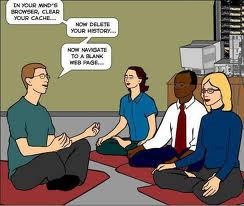 The elements of wellbeing (and the difference with wellness). A lot of people seem to use both words as synonyms, but don’t actually realise that there’s a difference.
The elements of wellbeing (and the difference with wellness). A lot of people seem to use both words as synonyms, but don’t actually realise that there’s a difference.
Wellbeing refers to a more holistic whole-of-life experience, whereas wellness refers just to physical health and fitness.
Allan Watkinson, engagement manager of Gallup Consulting, reviewed the results of a major global study into wellbeing, which recorded people’s perceptions of both their daily life experiences and overall life evaluation.
Essential elements of wellbeing
Watkinson identified five essential elements of wellbeing:
-
Career wellbeing — the most important one — whether you like what you do each day (which is not necessarily work)
-
Social wellbeing — relationships and love
-
Financial wellbeing — managing finances in order to reduce stress and increase security
-
Physical wellbeing — levels of health and energy
-
Community wellbeing — involvement in community activities.

He added that it is perceptions rather than actual measurement that influence wellbeing; that is, comparisons with the circumstances of others. For example, a person who has average wealth is more likely to be unhappy with it if he/she lives in a ‘rich’ locality than in a ‘poor’ one.
The five elements are discussed in further detail below.
- Career wellbeing
Given that this element has the biggest impact on wellbeing, it is notable that 60% of those surveyed believed that their employer negatively affected their wellbeing. Only 20% really liked what they did each day. The opportunity to use one’s strengths at work is also a key driver of perception of wellbeing.Watkinson commented that Generation Y employees are often criticised for their apparently casual attitudes towards work, but in fact they are simply demanding a better work–life balance and forcing employers to make necessary improvements in this area. - Social wellbeing
Around 6 hours of social time per day is considered necessary to make it a ‘good day’. This can be hard to achieve at work, although social time does include meal breaks, social emails and using social media sites.
This being the case, Watkinson said that banning access to social media sites at work can be very degrading for wellbeing. He suggested the solution is to allow a limited amount of access time, but to make employees responsible for their work output/quality, rather than work processes.
Having a small number of close friends is crucial to everyone’s wellbeing, and it is very important to have a friend and confidant at work. - Financial wellbeing
This refers to how comfortable you feel, not how much you earn.
Giving to others tends to increase your perception of wellbeing rather than rewarding yourself, and the purchasing experience often means more than the purchase itself. Material goods often create an initial buzz when new, but this quickly wears off. Default systems such as automated payments and savings plans also increase perceptions of financial wellbeing. - Physical wellbeing
Points made here included:
Regular exercise increases happiness and reduces stress.
It is better to exercise in the morning because endorphins released will last around 12 hours, and exercising at night can keep people awake.
Exercising 5 days a week is considered optimal, the benefits tend to plateau above that.
Long-term physical wellbeing requires short-term payoffs, such as weight loss.
You need to have some positive defaults. For example, shopping on a full stomach will reduce temptation. - Community wellbeing
This element of wellbeing is sometimes hard to achieve for people with busy jobs. It requires active participation in at least one community group, but it is important to be able to opt in or out of groups regularly.
It is estimated that if your employer encourages you to opt into community groups, you will become around 2.6 times more likely to like what you do.

Implications for employers?
Watkinson suggested the study results have the following implications for employers:
-
holistically measure and manage employees’ wellbeing
-
raise and promote employees’ awareness of wellbeing issues
-
assess the impact of your wellbeing initiatives
-
provide employees with assistance to manage their financial wellbeing (eg access to financial advice and counselling)
-
review the employment value proposition, and its ability to attract and retain employees. Employees tend to look for employers that will invest in them.
Further information
Watkinson described his presentation as a summary of the contents of the book “Wellbeing: The Five Essential Elements” by Tom Rath and Jim Harter, published by Gallup Press, New York, 2010.
Source: Workplaceinfo.com.au
